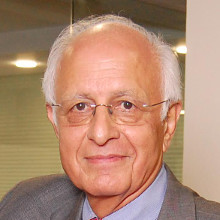[Photograph by Steve Browne & John Verkleir under Creative Commons]
India is shining. It has retained the third position among countries with the most billionaires according to the Hurun Global Rich List. Now India has 111 billionaires, an increase of 14 since last year. Topping the list of Indian billionaires are Mukesh Ambani, Dilip Shanghvi, Pallonji Mistry and Shiv Nadar—entrepreneurs who have amassed huge fortunes. Sachin Bansal and Binny Bansal, founders of Flipkart, have joined the billionaires club.
In the same week, while an Indian economic newspaper reported the rise of Indian billionaires, a large number of entrepreneurs met at the Sabarmati Ashram under the banner of Global Action on Poverty (GAP). The gap between the wealth of the entrepreneurs gathered at Sabarmati and the billionaires on top of the wealth list is huge. The mission of their enterprises is also very different. Their success is not measured by the scale of capital accumulated by their promoters and investors. These are social entrepreneurs, working to increase human, social and economic capital at the bottom of the pyramid. The success of their enterprises lies not in the profit they make from innovations sold to people at the bottom of the economic pyramid, but in the impact their innovations and enterprises have on enabling those people to make profits for themselves. The mission of their ‘startups’ is to enable all Indians to ‘stand up’, by reducing the painful zeroes in millions of Indians’ lives; not to add more zeroes at the end of measures of their own wealth, to make themselves millionaires and then billionaires.
Social enterprises
An entrepreneur at GAP, a Harijan, lives with his mother, a sweeper in Haryana. He obtained a master’s degree from the Tata Institute of Social Sciences, and has started a school to provide sweepers’ children with remedial education so that they can succeed in the mainstream. Already one of the students has joined an IIT. Others are on the way.
Another entrepreneur, with a degree in agriculture management, has created cooperative organisations of farmers in a drought prone district of Maharashtra to manage water resources, to own and run a food processing plant, and a cooperative marketing organisation. He is helping the farmers’ enterprise to expand its scope, geographically by enrolling more villages, and its depth by adding more activities.
Head Held High is a group of tech-savvy social entrepreneurs from Bengaluru who are deploying technology platforms in 750 villages in 18 districts of Karnataka and Andhra Pradesh to provide career access to youth, business support to village entrepreneurs, and market access to corporations.
GAP has brought together over 300 such social entrepreneurs, from many parts of India, who are working to improve livelihoods, education, health, energy and environmental resources. Some have MBA and engineering degrees and have already succeeded in the mainstream, in technology startups and large corporations. Looking for more personal fulfilment and more challenge too, they have ventured into the space of social enterprises. At GAP, they work with mentors who have already built enterprises with large societal impacts, including Mohammad Yunus (of Grameen Bank), Ela Bhatt (the Self-Employed Women’s Association, or Sewa), Deep Joshi (Pradan), Vijay Mahajan (Basix), Madhav Chavan (Pratham), and Dr. R. Balasubramaniam (Swami Vivekananda Youth Movement). The change makers at GAP are learning from them and from each other, how to increase the impact of their enterprises in uplifting the lives of people at the bottom of the pyramid.
Scaling up
India has many wonderful examples of social entrepreneurs who have improved the lives of people. Yet, poverty is not being alleviated fast enough. Many successful pilots, not enough scale, is a criticism of the Indian social enterprise sector. Therefore, how to scale up the impact of social enterprises is a principal issue for GAP. A question often asked is: What about learning from the corporate sector, about how small startups grow into large enterprises, and how large corporations are run?
There is a fundamental difference in the concept of scale between the business-corporate and social enterprise sectors. The success of business corporations is invariably measured by the size they attain: their incomes, their profits, their stock valuations and the wealth accumulated by their founders. Whereas the success of social enterprises must be measured by the impact they have on the lives of others. Indeed, the larger its impact and the smaller the organisation itself is, the more successful it is. This is a concept that applies to government too, which is a social enterprise. Its purpose must be to impact the lives of people, not increase its own size: minimum government, maximum impact.
The objective of the social entrepreneur must be to release the power within people at the bottom of the pyramid. This is the lesson from Grameen Bank, Sewa and Pradan, which are no longer pilots, but large enterprises that have improved the lives of millions of poor people. The social entrepreneur is a catalyst, not the resource in the chemical equation. The principal resource is the people themselves who learn, and stand up, and improve their own lives. The catalyst helps to release the constraints on the agency of people that society has imposed.
The catalyst must understand the aspirations of the people to be uplifted, not impose his or her own ideas of what people need. The need is theirs and the solutions must be theirs too, assisted by catalysts, experts and resource providers. ‘Customer-centric’ design is becoming a new slogan for developing products and services in the business world. ‘People-centric’ design is necessary for social enterprises to have impact. For this, the people must be listened to first: an expert’s pre-conceived solutions should not be imposed on them.
Collaboration
Another insight from the mentors is the power of collaboration among the intended beneficiaries of the social enterprises. When women’s self help groups come together, when village communities work together, when farmers work in cooperative organisations, they build their own social capital and increase their power to overcome external and internal obstacles to their progress.
Tools have been developed by social entrepreneurs to catalyse collaboration within communities. Sewa has developed protocols for group management which it teaches leaders of communities. The Krishi Gram Vikas Kendra (KGVK) is teaching villagers in Jharkhand simple techniques of systems thinking with which they can map their own village system to understand the interactions between its various facets, and they can locate the leverage points at which concerted action will improve the village and their lives faster. Then they can ‘pull in’ the resources from those government schemes that fit their needs best.
Grassroot, a social enterprise in South Africa, has developed a mobile phone-based application to facilitate cooperation within communities. It provides protocols for conducting effective meetings, polling opinions of members and disseminating information rapidly. Sewa intends to carry out a pilot of Grassroots’ technology in India to supplement its own community building methods.
A principal thrust of enterprises to remove poverty must be to increase incomes for the people, by enabling them to form income-generating enterprises. Therefore, income generation and sustainable livelihoods are the core of successful enterprises such as Grameen, Sewa and Pradan. Similarly, India’s thrust for more inclusive and sustainable growth must be to encourage the formation and growth of many more small and medium enterprises (SMEs) in manufacturing and services.
SMEs create more employment, with less capital, than do large enterprises. However, there are many constraints on their growth. They need access to finance, to suppliers and to markets. But banks, suppliers and buyers say that small enterprises are too costly to service. The ‘last mile’ costs to complete small contracts with them are too high. It is easier and more profitable to deal with large enterprises. SMEs also suffer from the poor infrastructure in the country, for power, transportation, effluent disposal, etc. as large enterprises do too. Whereas large enterprises can afford to set up their own infrastructure, SMEs cannot.
The solution to overcome the costs of being too small is for SMEs to aggregate into clusters.
Indeed, this is the way that SMEs in many countries have become cost competitive. Studies done by GIZ, the German development organisation, and many other agencies, have revealed that SMEs in India have not been organising themselves as effectively into clusters as SMEs in other countries have. Therefore, there is a great opportunity for India to grow its SME sector, and with it employment, by encouraging better collaboration among SMEs in more effective clusters and networks.
The people and their communities must be at the heart of any endeavour to improve the lives of people in a sustainable manner. Many institutional efforts—government programmes and corporate social responsibility (CSR) efforts too—complain there is insufficient buy in from communities for their programmes. This is a problem of programmes to build toilets, run health centres and others. Assets are built, the solution is supposedly provided, but it is not adopted by the people. Very often, the mistake is in the orientation of the partnership. The mindset seems to be to make the people partners in the government’s and social enterprise’s programme, rather than the government and social enterprise becoming partners in a programme owned by the community. This is also the reason why many governments, or large industry-led efforts to assist SMEs fail. SMEs do not have strong associations among themselves to pull in and use the assistance they need.
Networks of institutional partners
The Expert Committee for Innovation and Entrepreneurship, sponsored by NITI Aayog, and chaired by Prof. Tarun Khanna of Harvard Business School, says:
“While we celebrate the success of several new ventures in e-commerce, information technology and mobile telephony, these will not likely suffice to deliver our aggregate growth expectations. The agricultural sector remains moribund, the rural economy neglected, and vast sectors starved of capital and talent, constrained as these are by our collective underinvestment in the requisite supporting institutions. Similar institutional inadequacy challenges bedevil investments in so-called social enterprises as well. India will have to encourage creation of new SMEs focused on manufacturing and innovation, while spurring rural innovation and growth. Hence, putting entrepreneurship at the forefront of the economic agenda is the need of the hour.
“The culture of entrepreneurship should be inclusive and focus on a variety of enterprises, such as young & innovative technology firms, upcoming manufacturing businesses and rural innovator companies. Entrepreneurs should also be encouraged to help solve pressing socio-economic problems. There is a dire need to find financially viable solutions for the challenges of the disenfranchised. This will be of paramount importance, so as to ensure long-term social and economic stability, India needs a model that pulls along the 350-400 million people that currently reside outside mainstream society. Social inclusion not only fulfils higher altruistic purposes, but can also be financially viable. Furthermore, measures taken to enhance social inclusion would inevitably result in the opening up of a significant new market.”
The committee presents its recommendations for action as a pyramid. On top are the ‘quick wins’ and at the bottom are the fundamental institutional capabilities required to support a strong, high-performing entrepreneurial ecosystem of social enterprises and SMEs. The quick wins are creation of more incubators, and providing access to finance for entrepreneurs—usual business-like solutions. The fundamental institutional capabilities required, the committee says, include a ‘partnership ethos’ and overcoming a ‘trust deficit’ between partners.
Communities of people (and SMEs) must be at the centre of the partnerships. Around them are four institutions to support them: the government, civil society organisations (CSOs), business corporations and the media. Each of them has a role. Governments provide public funds, legitimacy, and reach. CSOs provide connects with people and an understanding of local contexts. Corporations can provide methods of management and catalytic financial resources. The media can be an accelerator, spreading around new ideas and success stories.
Each of these institutions must focus on their own partnerships with the communities in the centre and win their trust. Since these institutions’ resources complement each other’s, they must collaborate among themselves too. In practice, collaboration among them is difficult. They mistrust each other’s motives. They see each other as stereotypes and are often not willing to understand each other. Even among government agencies themselves, and among CSOs, and among corporations involved together, cooperation is often difficult. They see each other as competitors, and try to get credit for themselves rather than give credit to other partners. Often collaboration between the institutions in the outer circle breaks down even on petty issues of whose name and logo will be on the programme! The sufferers are the community within the circle, for whose sake the institutions around them say they are working.
The expert committee says that changes in culture (to develop a partnership ethos and overcome the trust deficit) will take time. All the more reason that, in the sequencing of actions, strong steps to make these changes must begin much sooner rather than later. Because if these are base-level capabilities that support the pyramid, the scale of the pyramid cannot be increased if its foundations are not wide and strong. Piling on more short-term quick wins will not create the large, strong entrepreneurial ecosystem the country needs.
Mentor organisations have shown how the foundational capabilities for forming partnerships with communities can be built. Others can develop these too. Young entrepreneurs need role models. The media has an institutional role to play to strengthen the ideas and mindsets that are the foundations of an entrepreneurial ecosystem. It should propagate the stories of catalytic social enterprises, perhaps more often than stories of unicorns and wealthy billionaires whose success is of a different sort. Because unless there is more human and social capital and economic wealth at the bottom of the pyramid, more billionaires’ perches aloft will not be sustainable.



